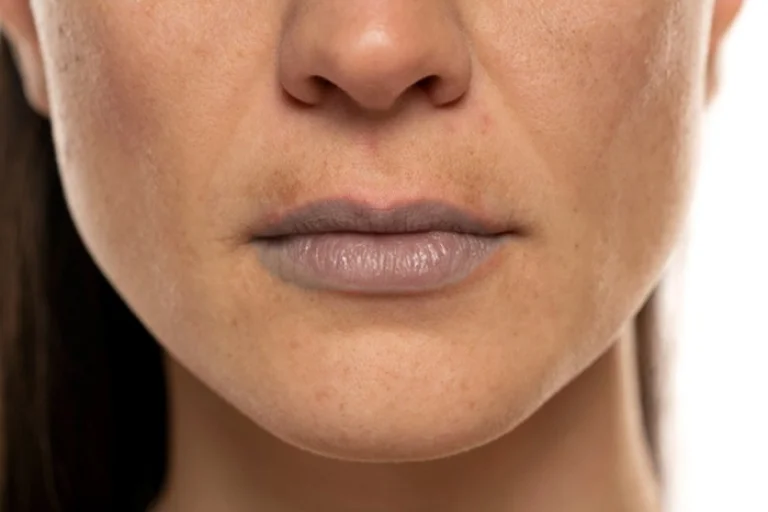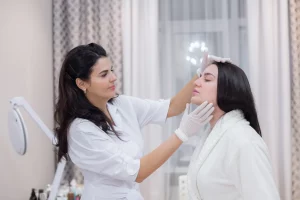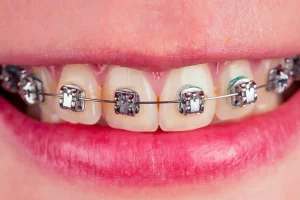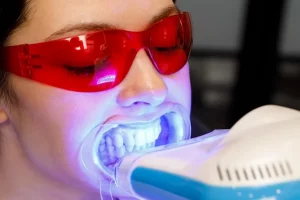Dark lips are one of the most common cosmetic concerns as it affects nearly 40% of people according to a study published in the Journal of Clinical and Aesthetic Dermatology. Dark lips rarely signal a health issue but they can affect confidence. The medical term for dark lips is lip hyperpigmentation, which is caused by excess melanin production in the lip tissues. It can make the lips look brown, grey, purplish, or even bluish.
The good news is that dark lips are usually reversible. Continue reading the article to understand what causes dark lips and how to fix them naturally.
Common Causes of Dark Lips
Sun Exposure
Lips lack melanin and sebaceous glands. So, without protection UV rays stimulate pigment and lower lips take the brunt. Prolonged exposure causes discoloration and roughness.
Dehydration
Being dehydrated causes dry lips that crack, flake, and heal poorly. Over time, they darken.
Smoking
Nicotine and benzpyrene in cigarettes stimulate melanin. This causes blood flow to decrease. So, the tissue stiffens and darkens. “Smoker’s melanosis” isn’t just a catchy name.
Caffeine and Lip Habits
Too much tea or coffee stains the lip surface. It also promotes dehydration. Licking, biting, and sucking your lips has the same effect. Saliva breaks down the skin barrier. Constant irritation adds to the pigment load.
Low-Quality Lip Products
Cheap lipsticks and balms are filled with dyes and irritants. Left overnight, they disrupt the skin. Add friction, neglect, and toothpaste residue, and you get a cycle of low-grade inflammation and darkening.
Systemic Conditions
Chemotherapy, anemia, vitamin deficiencies, hormonal changes, certain medications, and infections can all contribute. Minocycline and tetracycline are well-documented culprits. So is excess fluoride. If the change is sudden or irregular, rule out Addison’s disease or mucosal melanoma.
Genetic Factors
Some patients are born with darker lips. You can’t erase the base tone, but you can manage environmental aggravators.
Exfoliation: First Step to Brighter Lips
Dead skin makes lips look darker than they are. Removing it lets underlying healthy tissue show through. Don’t be aggressive. The skin is thin, and trauma won’t help.
- Honey and Sugar: One teaspoon each. Apply in gentle circles for one minute. Rinse. Use once a week.
- Lemon and Sugar: Roll a lemon slice in sugar. Rub it on your lips before bed. Rinse the next morning. Avoid broken skin.
- Butter and Sugar: Mix three teaspoons of sugar with two of butter. Massage gently. Do it up to three times a week. Olive oil works too.
Natural Inhibitors of Melanin
Some household ingredients reduce melanin with regular use. They won’t bleach, but they can brighten and even tone.
- Lemon Juice: Citric acid fades pigment. Apply fresh lemon to lips nightly. Or mix with honey and glycerin. Rinse after eight hours. Skip if lips are cracked.
- Turmeric and Milk: Turmeric blocks melanin production. Mix milk into a paste. Apply for five minutes. Rinse and moisturise.
- Aloe Vera: Aloesin may inhibit tyrosinase. Apply daily for 20 to 30 minutes. Rinse.
- Pomegranate and Milk Cream: Grind seeds. Mix with rosewater and cream. Massage. Rinse after three minutes. Use daily.
Keep Lips Moist to Avoid Pigment Buildup
Hydrated lips stay pinker. Dry ones dull out. Topical emollients work if applied often and consistently.
- Coconut Oil: Apply like a balm multiple times a day.
- Rosewater and Honey: Two drops of rosewater, six of honey. Use three to four times daily.
- Olive Oil: Massage in before bed. Seals moisture overnight.
- Almond Oil: Mix with lemon juice for depigmentation. Use nightly.
- Cucumber Juice: Apply chilled juice with cotton. Leave for 30 minutes. Rinse.
- Strawberries and Baking Soda: Mash strawberries with baking soda. Apply before bed. Rinse in the morning.
- Almond Cream Paste: Mix cream with almond powder. Apply. Let sit five minutes. Rinse with lukewarm water.
- Mustard Oil: Massage in 1–2 drops once daily.
- Radish Paste: Apply twice a week. Leave five minutes. Rinse.
- Beetroot Juice: Grate or blend beetroot. Apply juice. Leave for 15 minutes. Rinse.
Lifestyle Habits That Prevent Lip Darkening
- Hydrate: Drink at least eight glasses of water daily.
- Use SPF Lip Balm: Minimum SPF 30. Reapply often.
- Quit Smoking: Tobacco darkens lips and slows healing.
- Stop Lip Biting and Licking: Avoid repetitive trauma. Hot tea isn’t hydrating either.
- Build a Routine: Exfoliate weekly. Moisturise daily. Use occlusive balms at night. Avoid expired products. Always wash off lipstick before bed.
- Make Your Own Balm: Melt beeswax with coconut oil. Add peppermint oil. Store in a jar. Apply as needed.
Takeaway
Natural treatments work, but they take time. Consistency matters. So does patience. Always patch-test before trying something new. Lips react fast to irritants.
If lip colour changes suddenly, turns blue or purple, or affects breathing, refer out. If natural remedies don’t help within six to eight weeks, reassess. Persistent pigment may mean something else.
Cosmetic pigmentation is fair game to treat. Just don’t miss what you’re supposed to diagnose. Contact Oris Dental Center in Dubai for professional treatment options backed by experience and clinical precision.





